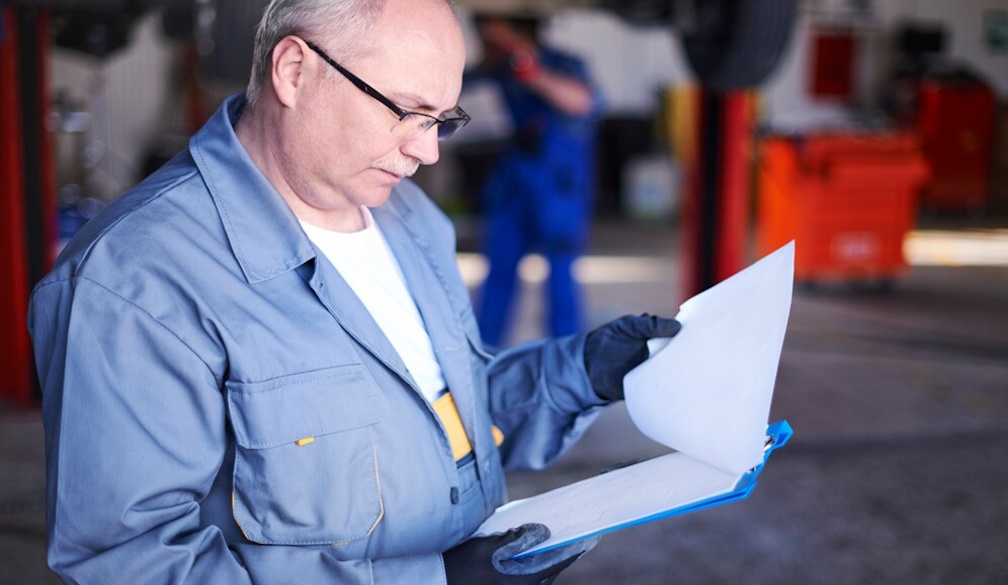What is Remote Visual Inspection in NDT

One of the lesser known yet critical processes in NDT testing is Remote Visual Inspection (RVI). Just as its name suggests, RVI enables remote inspection of hazardous or inaccessible places without direct human entry, with the help of advanced equipment such as borescopes, videoscopes, and robot crawlers. This technique detects defects, establishes structural integrity, and checks for perpetual safety without needing to disassemble or destroy the inspected part.
The Basics of RVI
Remote Visual Inspection is a technique using optical devices and imaging technology to visually examine the interior surfaces or trapped areas of equipment. It falls under the umbrella of visual testing, but is not direct visual inspection since it allows entry into areas that would otherwise require extensive dismantling or risk to human inspectors.
RVI has broadest uses in industries including:
● Aerospace
● Power generation
● Oil and gas
● Chemical processing
● Maritime and shipping
● Automotive and rail
In these industries, safety and uptime are paramount. Equipment such as turbines, pipelines, boilers, heat exchangers, or jet engines can't be disassembled for examination readily. RVI provides a non-destructive way of peering inside, and is doing so effectively.
Typical Equipment Used
Various devices are used in RVI depending on where the object is situated, its size, and how complicated the object is. Typical devices are:
Borescopes: These are devices with rigid or flexible tubes with a camera and light source. They are inserted into small openings or cavities and transmit images back to a screen.
Videoscopes: More advanced than borescopes, videoscopes have high-definition digital cameras, improved lighting, and the capacity to record video.
Robotic Crawlers: For pipelines or large, enclosed equipment, robotic crawlers with cameras can be driven through the interior, feeding real-time video.
Drones: Used for more widespread industrial applications (e.g., wind turbine blades or storage tanks), HDcamera drones are a contact-free means of RVI.
The choice of tool depends on the area's size, shape, and complexity, and can also depend on the level of detail required.
How RVI Works
The process starts with identifying the inspection object and whether remote access is going to be required or not. Once that’s established, inspectors select an appropriate device and insert it into the access point —e.g.,the opening of a pipe, inspection port, or borehole.
Lighting is also important in RVI. The majority of units include adjustable LED lighting to offer illumination in dark or shadowed areas. The camera then transmits a real-time video to a screen, on which the inspector can examine the condition in real time or record the video for subsequent inspection.
Modern systems commonly include image enhancement, zoom, measurement software, and defect recognition algorithms to aid in precision and repeatability.
Applications of RVI in Industry
Following are just a few instances of how RVI is applied:
● Turbine Inspection: RVI examines turbine blades in jet engines and power plants for cracking, erosion, or foreign object damage without the unit needing to be dismantled.
● Weld Inspection: In pipelines or pressure vessels, RVI may examine weld seams for corrosion, pitting, or lack of fusion.
● Pipeline Inspection: Robotic crawlers inspect the interior condition of long pipelines for blockages, leaks, or thinning of the wall.
● Storage Tank Inspections: Drones or pole-mounted cameras can inspect the interior roofs and walls of storage tanks for corrosion, cracking, or degradation of coatings.
● Aircraft Maintenance: RVI is utilized to inspect interior aircraft wings, fuselage sections, and engineswith less downtime and enhanced safety.
Benefits of Remote Visual Inspection
There are various benefits to RVI, and it is often praised for being :
● Non-Invasive: Equipment disassembly or shutting down operations is not required, thus saving cost and time.
● Safe: Inspectors are not required to enter peril from hazardous conditions like high-radiationenvironments, confined spaces, or hot/cold areas.
● Fast Turnaround: There is possible quick inspection and report turnaround with minimal disruption to operations.
● Documented Evidence: RVI equipment may capture images and video with confirmable audit or future reference data.
● Repeatable and Accurate: Detailed imaging facilitates detailed analysis and longer-term condition monitoring.
Limitations of RVI
While RVI is a useful tool, it has some limitations, with common ones being:
● Access Point Dependent: You must have or create a way to insert the inspection device.
● Operator Competency Is Important: Correct interpretation depends on the experience and skill of the inspector.
● Limited to Visual Information: RVI will not detect subsurface defects or material composition; it only provides surface information.
● Resolution Limits: While newer systems are advanced, image resolution may still be limited by illumination, lens quality, or barriers.
RVI and the Future of NDT
As imaging technology improves, RVI is becoming more powerful and accessible. Future trends include things such as AI for defect detection and pattern recognition, AR overlays for guided inspection and training and wireless and cloud-connected devices for remote collaboration and instant reporting. While the benefits of such advancements are yet to be exploited, it is clear that RVI is becoming increasingly more efficient.
Conclusion
Remote Visual Inspection is a cornerstone of modern NDT practices, offering a safe, efficient, and cost-effective way to evaluate critical components in hard-to-reach areas. While it may seem as simple as "looking inside," the tools and technology behind RVI are anything but basic. As industries continue to demand safer inspections with minimal downtime, RVI will only grow in importance—bringing eyes where human ones can't go, and keeping the systems we rely on running smoothly.









